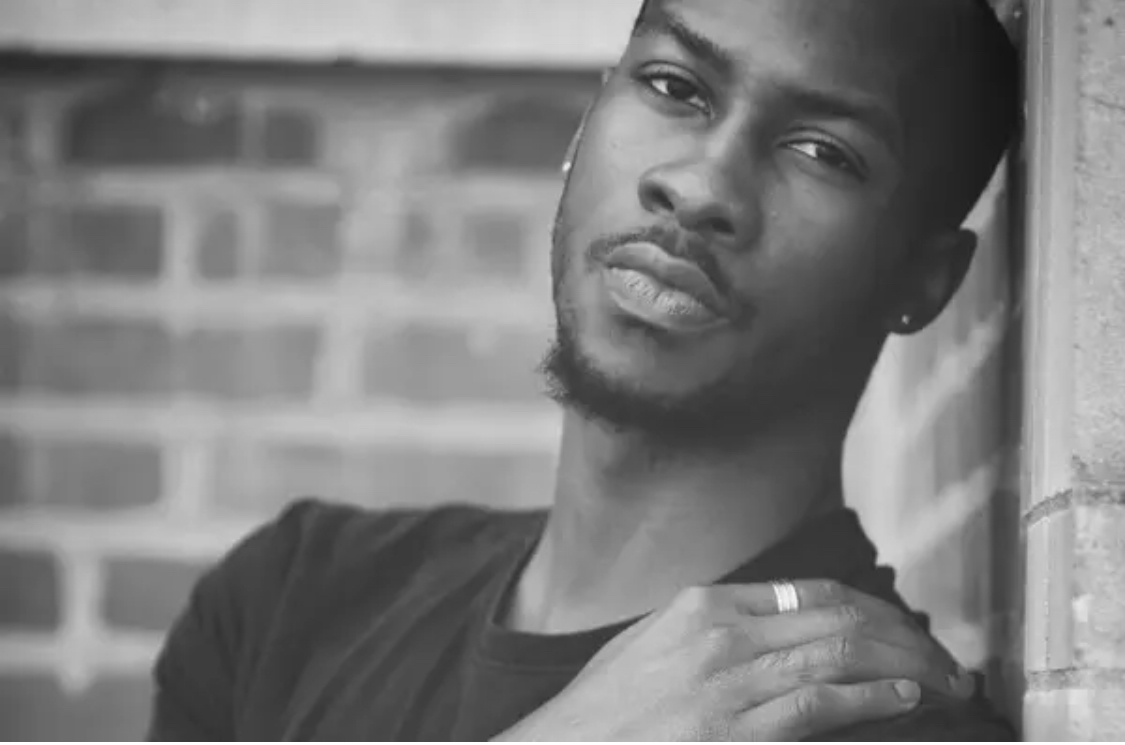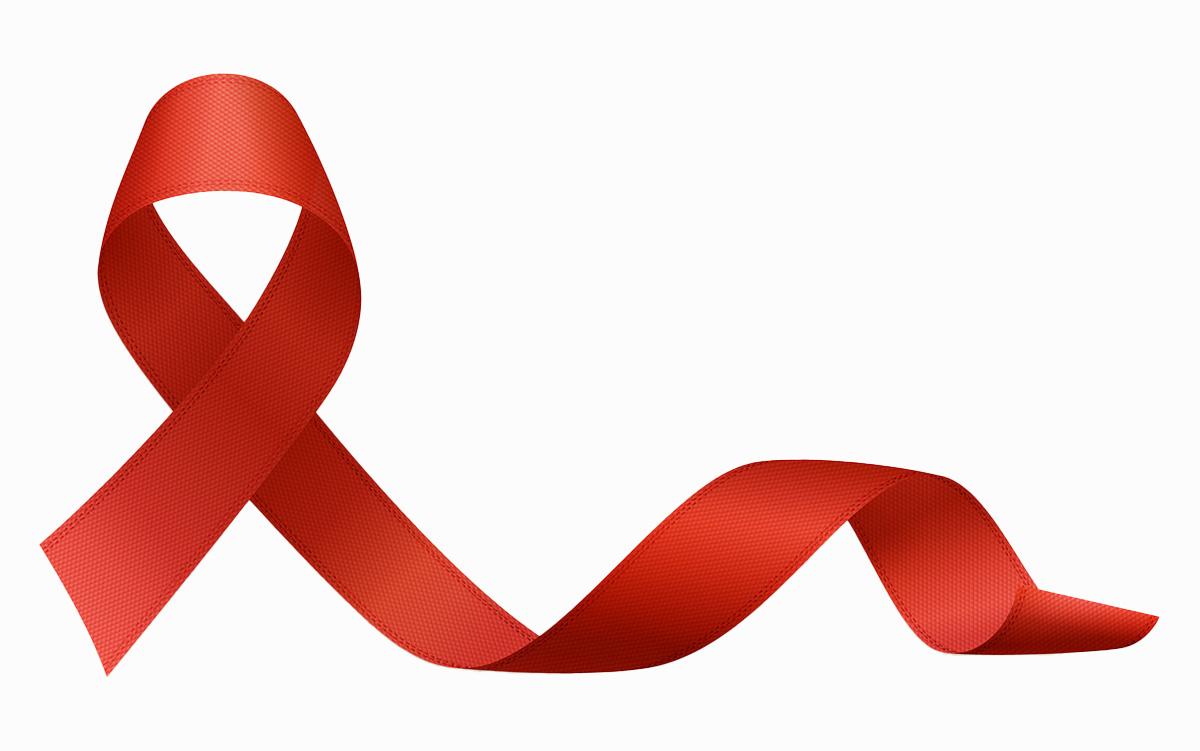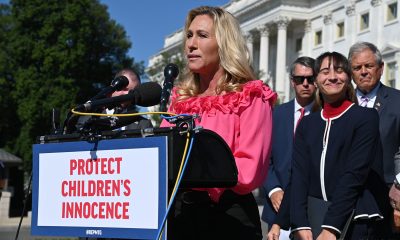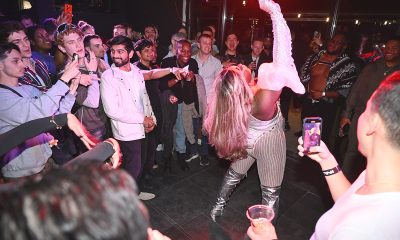Commentary
O’Shae Sibley’s murder is an attack on LGBTQ people and their expression, as both rise
More than 350 anti-LGBTQ attacks reported between June 2022 and July 2023

BY HENRY HICKS IV | What do the banning of a children’s picture book about two male penguins, white supremacist stand-offs outside of weekend brunches and a killing during impromptu dancing at a gas station have in common? Plenty. Each impinges on the escalating trend of attacks on LGBTQ+ people and their right to free expression.
On the evening of July 29, O’Shae Sibley pulled into a Brooklyn gas station parking lot with his friends to fill up their gas tank. As they waited for the tank to fill, the group spilled from the car and used the moment to move joyfully in the hot summer night, cranking the car radio’s volume and dancing together. Sibley, a gay man, was also a skilled professional dancer and choreographer. He displayed his talents this night, voguing to the sounds of Beyoncé, an artist that Sibley and his friends were fans of. By coincidence, the artist was performing just a few miles away that night, with professional voguers joining her on stage.
Vogueing, a dance style born out of the traditionally queer ballroom scene, is known for its electrifying dips, drops and duckwalks. The style has been prominently featured in the Golden Globe-winning television show “Pose” — and, more recently, on stage in Beyoncé’s all-consuming Renaissance World Tour. The energy of the ballroom scene has spirited communities across the country, as Beyoncé’s tour has touched down city-by-city, and Sibley and his friends were not exempt to this reach. He was, in fact, eager to participate in his artistry as someone known for his role as a dancer, choreographer, and active member of New York’s ballroom community.
As he and his friends vogued to Beyoncé in the parking lot, moves that Sibley was adept in as an artist himself, they grabbed the attention of hostile onlookers. As captured on surveillance footage, Sibley was first berated with homophobic slurs — Sibley’s vogue performance seeming to signal his sexuality to his attacker. Shortly following the verbal assault, things turned violent. Sibley was stabbed and murdered in a tragic hate crime, fueled by homophobia and triggered by Sibley’s open expression as a dancer and artist.
In mourning, and in defiant protest in the days following, the New York City queer community hosted a memorial at the site of his murder where they honored his memory through performance, with a vibrant and resistant ball.
“You won’t break my soul. / You won’t break my soul, no, no. / I’m telling everybody,” Beyoncé sings defiantly in her single, “Break My Soul.”
The murder of O’Shae Sibley was devastating — and a signal of a disturbing trend. Increasing violence toward LGBTQ+ people, and attempts to quash their personal and artistic expression, are on the rise in the United States. Advocacy organizations such as GLAAD and the Anti-Defamation League have reported surges in harassment, vandalism and physical violence against LGBTQ+ people — with 356 instances being reported between June 2022 and April 2023. Transgender people, as well as drag performers, have been targeted at notably high rates. The Human Rights Campaign reported 34 murders of trans people — mostly trans women of color — in 2022 (HRC emphasizes that the actual number is likely higher, as most attacks go unreported, or are reported inaccurately.)
Drag shows across the country have faced threats and intimidation from armed protesters, including the far-right extremist group, the Proud Boys. Gay bars have been targeted by armed assailants, such as the tragic massacre thatoccurred at Club Q in Colorado Springs, Colo., last November. Hospitals providing gender-affirming care to transgender youth have been targeted with bomb threats. On Aug. 18, a California store owner was shot and killed for displaying a Pride flag. Harassment, threats of violence, and hate crimes against the LGBTQ+ community have steadily risen in recent years. It is clear that this bigotry has been emboldened and its first goal is to silence the free expression of LGBTQ+ people, through violence if necessary.
The exponential increase in physical violence against LGBTQ+ people over the last few years cannot be divorced from the recent legislative environment that has grown ever-more hostile to LGBTQ+ expression. Bills categorizing drag shows as obscenity, book bans targeting LGBTQ+ authors and stories about queer identities in schools and public libraries, as well as other legislative attacks are part of this trend against the LGBTQ+ community. The attacks, both physical and through laws and bans, risk enabling a culture that normalizes repression of queer voices and increases the risk of violence aimed, in part, at suppressing expression of LGBTQ+ people, even when individuals are simply voguing to Beyoncé in public.
Starting in 2021, we’ve seen a historic surge in book bans around the country, targeting LGBTQ+ voices and stories at a disproportionately high rate. PEN America has reported that among the top eleven books targeted by bans in the first half of the 2022-2023 school year, four focused on LGBTQ+ narratives. These challenges, paired with the historic number of bills targeting LGBTQ+ people in state legislatures across the United States — with at least 566 bills ensnaring the broader LGBTQ+ community, according to the Trans Legislation Tracker — contribute to the normalization of repressing personal and artistic expression of queer people. As these policy attacks continue to advance, violence against the LGBTQ+ community has surged.
And while O’Shae Sibley’s murder occurred in New York, a state that has passed no anti-LGBTQ+ bills in the most recent legislative session, his brutal killing shows just how pervasive the impact of anti-LGBTQ+ legislative attacks on free expression in other states are, shaping a culture that spills across borders and impacting LGBTQ+ people throughout the country. Even states perceived to be supportive to the LGBTQ+ community, such as New York, are not immune to the cultural reach of anti-LGBTQ+ repression and intimidation: the home and office of Erik Bottcher, a gay city councilmember in New York City, was vandalized last December after he voiced support for Drag Story Hour, and more recently, a rainbow Pride flag at a Manhattan restaurant was intentionally lit on fire.
Political threats to LGBTQ+ expression, whether it be through restricting and chilling on-stage performance or making it virtually impossible to even acknowledge the existence of LGBTQ+ people in Florida and other states’ schools, have and will continue to put LGBTQ+ people at risk everywhere, chilling their ability to express themselves and potentially even sending them back into the closet, which, at its core, is a form of self-censorship.
A culture of free expression, where people can speak, write — or dance — free from fear of violence, is essential to a thriving democracy. LGBTQ+ people deserve to equally enjoy this right — through creative performance, gender expression, or displays of joy. The ongoing trend of legislative attacks on drag, attempts to label LGBTQ+ stories as “obscene,” and the accompanying trend of violent assaults on LGBTQ+ people are attacks on free expression and must be condemned as such.
Henry Hicks IV is the coordinator for PEN America’s U.S. Free Expression program. PEN America is committed to defending against attacks on LGBTQ+ free expression.
Commentary
Protecting the trans community is not optional for elected allies and candidates
One of oldest political tactics is blaming vulnerable group for societal woes

Being an ally to the trans community is not a conditional position for me, nor should it be for any candidate. My allyship doesn’t hinge on polling, focus groups, or whether courage feels politically convenient. At a time when trans people, especially trans youth of color, are under coordinated attack, elected officials and candidates must do more than offer quiet support. We must take a public and solid stand.
History shows us how these moments begin. One of the oldest political tactics is to single out the most vulnerable and blame them for society’s anxieties — not because they are responsible, but because they are easier to blame than those with power and protection. In Nazi Germany, Jewish people were primarily targeted, but they were not the only demographic who suffered elimination. LGBTQ people, disabled people, Romani communities, political dissidents, and others were also rounded up, imprisoned, and killed. Among the earliest acts of fascistic repression was the destruction of Berlin’s Institute for Sexual Science, a pioneering center for gender-affirming care and LGBTQ research. These books and medical records were among the first to be confiscated and burned. It is not a coincidence that these same communities are now the first to suffer under this regime, they are our canaries in the coal mine signaling what’s to come.
Congress, emboldened by the rhetoric of the Donald Trump campaign, recently passed HR 3492 to criminalize healthcare workers who provide gender-affirming healthcare with fines and imprisonment. This bill, sponsored by celebrity politicians like Marjorie Taylor Greene, puts politics and headlines over people and health outcomes. Healthcare that a number of cis-gendered people also benefit from byway of hair regeneration and surgery, male and female breast augmentation, hormone replacement therapy etc. Even when these bills targeting this care do not pass, they do real damage. They create fear among patients, legal uncertainty for providers, and instability for clinics that serve the most marginalized people in our communities.
Here in D.C., organizations like Planned Parenthood and Whitman-Walker Health are lifelines for many communities. They provide gender-affirming care alongside primary care, mental health services, HIV treatment, and preventative medicine. When healthcare is politicized or criminalized, people don’t wait for court rulings — they delay care, ration medication, or disappear from the system entirely.
As a pharmacist, I know exactly what that means. These are life-saving medications. Continuity of care matters. Criminalizing and politicizing healthcare does not protect children or families — it puts lives at risk.
Instead of centering these realities, political discourse has been deliberately diverted toward a manufactured panic about trans women in sports. Let me be clear: trans women deserve to be protected and allowed to compete just like anyone else. Athletics have always included people with different bodies, strengths, and abilities. Girls and women will always encounter competitors who are stronger or faster — that is not a gender or sports crisis, it is the nature of competition.
Sports are meant to teach fairness, mutual respect, and the shared spirit of competition — not suspicion or exclusion. We should not police young people’s bodies, and we should reject attempts to single out trans youth as a political distraction. Families and doctors should be the authority on sex and gender identity.
This narrative has been cynically amplified by the right, but too often Democrats have allowed it to take hold rather than forcefully rejecting it. It is imperative to pay attention to what is happening — and to push back against every attempt to dehumanize anyone for political gain.
Trans people have always been part of our communities and our democracy. Protecting the most vulnerable is not radical — it is the foundation of a just society. My work is grounded in that commitment, and I will not waver from it. I’m proud to have hired trans political team Down Ballot to lead my campaign for DC Council At Large. We need more ally leaders of all stages to stand up for the LGBTQ+ community. We must let elected detractors know that when they come for them, then they come for all of us. We cannot allow Fox News and social media trolls to create a narrative that scares us away from protecting marginalized populations. We must stand up and do what’s right.
Anything less is not leadership.
Rep. Oye Owolewa is running for an at-large seat on the D.C. Council.
Commentary
America is going in the wrong direction for intersex children
Lawmakers are criminalizing care for trans youth, while permitting irreversible harm to intersex babies

I live with the consequences of what America is willing to condone in the name of “protecting children.”
When I was young, doctors and adults made irreversible decisions about my body without my informed consent. They weren’t responding to an emergency. They were responding to discomfort with innate physical differences and the social and medical pressure to make a child’s body conform to a rigid female-male binary. That’s the part people like to skip over when they talk about “child welfare”: the harm didn’t begin with my identity. It started with adults deciding my healthy body needed fixing.
That’s why the hypocrisy unfolding right now from statehouses to Capitol Hill feels so familiar, and so dangerous.
While harmful medical practices on intersex children, the nearly 2 percent born with differences in one or more of their physical sex characteristics, have been ongoing in the U.S. for decades, until recently, there was no law specifically condoning it.
This month, House Republicans passed one of the most extreme anti-trans bills in modern American history, advancing legislation that would criminalize gender-affirming medical care for transgender youth and threaten doctors with severe penalties for providing evidence-based treatment. The bill is framed as a measure to “protect children,” but in reality, it weaponizes the criminal legal system against families and providers who are trying to support young people in surviving adolescence.
At the same time, the administration has proposed hospital and insurance policies designed to choke off access to affirming care for trans youth nationwide by making providers fear loss of federal funding, regulatory retaliation, or prosecution. This is a familiar strategy: don’t just ban care outright; instead, make it so risky that hospitals stop providing it altogether. The result is the same everywhere. Young people lose access to care that major medical associations agree can be lifesaving.
All of this is happening under the banner of preventing “irreversible harm.”
But if America were genuinely concerned about irreversible harm to minors, the first thing lawmakers would address is the medically unnecessary, nonconsensual surgeries still performed on intersex infants and young children, procedures that permanently alter healthy tissue, often without urgent medical need, and long before a child can meaningfully participate in the decision. Human rights organizations have documented for years how these interventions are justified not by medical necessity, but by social pressure to make bodies appear more typically “female” or “male.”
Here is the uncomfortable truth: all of the state laws now banning gender-affirming care for transgender youth explicitly include exceptions that allow nonconsensual and harmful intersex surgeries to continue.
A recent JAMA Health Forum analysis found that 28 states have enacted bans on gender-affirming care for minors that carve out intersex exceptions, preserving doctors’ ability to perform irreversible “normalizing” procedures on intersex children even while prohibiting affirming care for trans adolescents.
This contradiction is not accidental. It reveals the real priority behind these laws.
If the goal were truly to protect children from irreversible medical interventions, intersex kids would be protected first. Instead, these policies target one group of children, transgender youth, while continuing to permit permanent interventions on another group whose bodies challenge the same rigid sex and gender binary that lawmakers are trying to enforce.
Intersex people are routinely erased from American policy debates, except when our bodies are invoked to justify harmful laws, warning that intersex children are being used as legal loopholes rather than protected as human beings. This “protect the children” rhetoric is routinely deployed to justify state control over bodies, while preserving medical practices that stripped intersex children like me of autonomy, good health, and choice. Those harms are not theoretical. They are lifelong.
What makes this moment even more jarring is that the federal government had finally begun to recognize intersex people and attempt to address the harms suffered.
In 2024, at the very end of his term, the Biden administration released the first-ever intersex health equity report — a landmark admission that intersex people have been harmed by the U.S. health care system. Issued by the Department of Health and Human Services, the report documents medically unnecessary interventions, lack of informed consent, and systemic erasure and recommends delaying irreversible procedures until individuals can meaningfully participate in decisions about their own bodies.
This should have been a turning point. Instead, America is moving in the opposite direction.
On day one, President Trump issued an executive order defining “sex” in a way attempting to delegitimize the existence of transgender Americans that also erased the existence of many intersex people.
When medicine is used to erase difference, it is called protection, while care that supports self-understanding is treated as a threat. This is not about medicine. It is about control.
You cannot claim to oppose irreversible harm to children while legally permitting surgeries that intersex adults and human rights experts have condemned for decades. You cannot claim to respect bodily autonomy while denying it selectively, based on whose bodies make lawmakers uncomfortable.
Protecting children means protecting all children, transgender, intersex, and cisgender alike. It means delaying irreversible interventions when they are not medically necessary. It means trusting and supporting young people and families over politicians chasing culture-war victories.
America can continue down the path of criminalizing care for some children while sanctioning harm to others, or it can finally listen to the people who have lived the consequences.
Intersex children deserve laws that protect their bodies, not politics that hurt and erase them.
Kimberly Zieselman is a human rights advocate and the author of “XOXY: A Memoir”. The author is a co-author of the JAMA Health Forum article cited, which examined state laws restricting gender-affirming care.

Today, on World AIDS Day, we honor the resilience, courage, and dignity of people living with HIV everywhere especially refugees, asylum seekers, and queer displaced communities across East Africa and the world.
For many, living with HIV is not just a health journey it is a journey of navigating stigma, borders, laws, discrimination, and survival.
Yet even in the face of displacement, uncertainty, and exclusion, queer people living with HIV continue to rise, thrive, advocate, and build community against all odds.
To every displaced person living with HIV:
• Your strength inspires us.
• Your story matters.
• You are worthy of safety, compassion, and the full right to health.
• You deserve a world where borders do not determine access to treatment, where identity does not determine dignity, and where your existence is celebrated not criminalized.
Let today be a reminder that:
• HIV is not a crime.
• Queer identity is not a crime.
• Seeking safety is not a crime.
• Stigma has no place in our communities.
• Access to treatment, care, and protection is a human right.
As we reflect, we must recommit ourselves to building systems that protect not punish displaced queer people living with HIV. We must amplify their voices, invest in inclusive healthcare, and fight the inequalities that fuel vulnerability.
Hope is stronger when we build it together.
Let’s continue to uplift, empower, and walk alongside those whose journeys are too often unheard.
Today we remember.
Today we stand together.
Today we renew hope.
Abraham Junior lives in the Gorom Refugee Settlement in South Sudan.


















